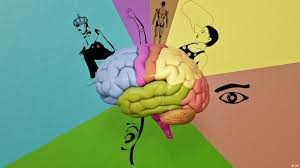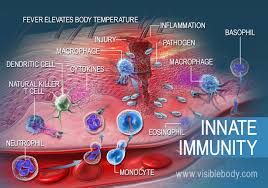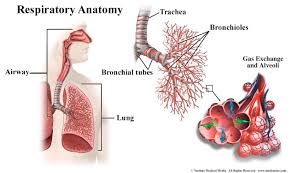Understanding how your body works is essential for maintaining good health and overall well-being. The human body is a complex and intricate system, composed of numerous interconnected parts that work together seamlessly to keep us functioning. From the brain’s neural networks to the heart’s rhythmic beats, every aspect of our physiology is designed to optimize our health. In this article, we will explore some amazing health facts about how your body operates, offering insights into its remarkable functions and processes.
1. The Brain: Your Body’s Command Center

1.1. The Complexity of the Brain
- Neural Connections: The human brain contains approximately 86 billion neurons, each connected by synapses to form complex neural networks. These connections allow for communication between different brain regions and are responsible for everything from basic reflexes to advanced cognitive functions.
- Brain Plasticity: The brain exhibits a remarkable ability to adapt and reorganize itself in response to new experiences and learning. This phenomenon, known as neuroplasticity, enables the brain to form new connections and recover from injuries.
1.2. Cognitive Functions
- Memory and Learning: The hippocampus, a critical structure in the brain, plays a vital role in forming and storing new memories. It helps in learning by creating associations between different pieces of information and experiences.
- Emotions and Decision-Making: The amygdala, an almond-shaped cluster of nuclei in the brain, is involved in processing emotions such as fear and pleasure. It also plays a role in decision-making by influencing our responses to emotional stimuli.
2. The Heart: The Powerhouse of Circulation
2.1. The Role of the Heart
- Pumping Blood: The heart is a muscular organ responsible for pumping blood throughout the body. It beats approximately 100,000 times per day, circulating about 5,000 to 6,000 liters of blood through the cardiovascular system.
- Electrical Activity: The heart’s rhythm is regulated by electrical impulses generated by the sinoatrial (SA) node, often referred to as the heart’s natural pacemaker. These impulses coordinate the contraction and relaxation of the heart muscles, ensuring efficient blood flow.
2.2. Cardiovascular Health
- Blood Pressure: Blood pressure is the force exerted by blood against the walls of the arteries. Maintaining healthy blood pressure levels is crucial for preventing cardiovascular diseases such as hypertension, heart attacks, and strokes.
- Circulatory System: The circulatory system consists of the heart, blood vessels, and blood. It delivers oxygen and nutrients to tissues while removing waste products. Arteries carry oxygen-rich blood away from the heart, while veins return oxygen-poor blood back to the heart.
3. The Digestive System: Breaking Down Nutrients
3.1. Digestive Processes
- Food Breakdown: The digestive system is responsible for breaking down food into smaller molecules that can be absorbed and utilized by the body. This process begins in the mouth, where enzymes in saliva start breaking down carbohydrates.
- Absorption and Elimination: The small intestine is the primary site for nutrient absorption, where digested food particles pass through the intestinal lining into the bloodstream. The large intestine absorbs water and electrolytes, forming waste products for elimination.
3.2. Gut Microbiome
- Microbial Ecosystem: The gut microbiome consists of trillions of microorganisms, including bacteria, fungi, and viruses, that live in the digestive tract. These microbes play a crucial role in digestion, metabolism, and immune function.
- Health Implications: A balanced gut microbiome is essential for maintaining digestive health and preventing conditions such as irritable bowel syndrome (IBS) and inflammatory bowel disease (IBD). Diet, probiotics, and lifestyle factors can influence the composition of the gut microbiome.
4. The Immune System: Defending Against Disease

4.1. Immune Response
- Defense Mechanisms: The immune system is a complex network of cells, tissues, and organs that work together to defend the body against pathogens such as bacteria, viruses, and fungi. Key components include white blood cells, antibodies, and the lymphatic system.
- Inflammation: Inflammation is a natural response to infection or injury, characterized by redness, swelling, heat, and pain. While inflammation is essential for healing, chronic inflammation can contribute to various health issues, including autoimmune diseases and chronic conditions.
4.2. Immune System Components
- White Blood Cells: White blood cells, or leukocytes, are a crucial part of the immune system. They include various types, such as lymphocytes (B cells and T cells), which are responsible for recognizing and targeting specific pathogens.
- Antibodies: Antibodies are proteins produced by B cells that bind to and neutralize pathogens. They play a key role in the adaptive immune response, helping the body remember and respond more effectively to previously encountered threats.
5. The Musculoskeletal System: Movement and Support
5.1. Bone and Muscle Function
- Bone Structure: The human skeleton is composed of 206 bones that provide structural support, protect vital organs, and facilitate movement. Bones are dynamic tissues that continuously remodel in response to stress and activity.
- Muscle Contraction: Muscles work in pairs to enable movement. When one muscle contracts, the opposing muscle relaxes, allowing for coordinated motion. There are three types of muscle tissue: skeletal, smooth, and cardiac, each with distinct functions.
5.2. Joint Health
- Joint Types: Joints are the connections between bones that allow for movement. They can be classified into various types, including hinge joints (e.g., elbows and knees), ball-and-socket joints (e.g., shoulders and hips), and pivot joints (e.g., neck).
- Maintaining Joint Health: Regular exercise, proper nutrition, and maintaining a healthy weight are important for preserving joint health and preventing conditions such as arthritis and osteoporosis.
6. The Endocrine System: Hormonal Regulation
6.1. Hormone Production
- Endocrine Glands: The endocrine system consists of glands that produce hormones, which are chemical messengers that regulate various bodily functions. Key glands include the pituitary gland, thyroid gland, adrenal glands, and pancreas.
- Hormonal Balance: Hormones play a critical role in regulating metabolism, growth, reproduction, and mood. Imbalances in hormone levels can lead to conditions such as diabetes, thyroid disorders, and adrenal insufficiency.
6.2. Feedback Mechanisms
- Hormonal Regulation: The endocrine system uses feedback mechanisms to maintain hormonal balance. For example, the hypothalamus and pituitary gland regulate the production of thyroid hormones through a feedback loop that involves the thyroid gland.
7. The Respiratory System: Breathing and Oxygenation

7.1. Respiratory Function
- Breathing Process: The respiratory system facilitates the exchange of oxygen and carbon dioxide between the body and the environment. Breathing involves the inhalation of oxygen-rich air and the exhalation of carbon dioxide.
- Lung Function: The lungs are the primary organs of respiration, where oxygen is absorbed into the blood and carbon dioxide is expelled. The diaphragm and intercostal muscles play a key role in the mechanics of breathing.
7.2. Respiratory Health
- Lung Capacity: Lung capacity refers to the total volume of air the lungs can hold. It is influenced by factors such as age, fitness level, and respiratory health. Regular physical activity and avoiding smoking can help maintain optimal lung function.
- Respiratory Diseases: Common respiratory conditions include asthma, chronic obstructive pulmonary disease (COPD), and pneumonia. Managing these conditions involves medication, lifestyle changes, and avoiding triggers.
8. Conclusion
The human body is an extraordinary machine, with each system and organ performing intricate functions that are essential for our survival and well-being. From the brain’s cognitive processes to the heart’s rhythmic beats, the body’s ability to maintain health and adapt to various challenges is truly remarkable. By understanding how your body works, you can make informed choices to enhance your health and improve your quality of life. Embrace the wonders of your body, and take steps to nurture and care for it, ensuring that it continues to function optimally for years to come.

